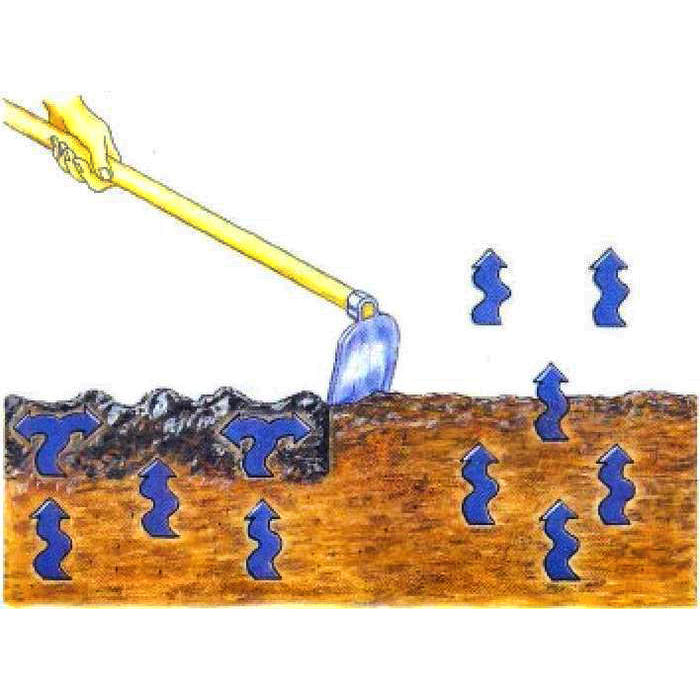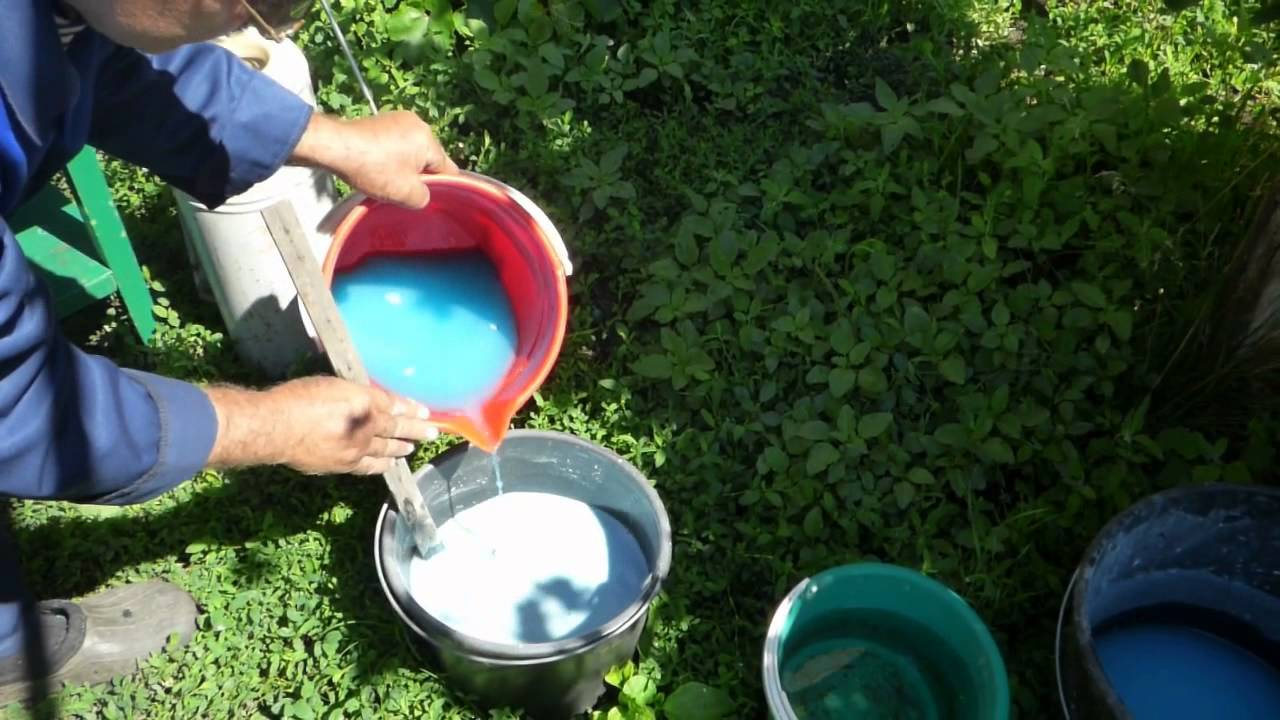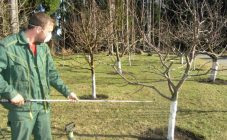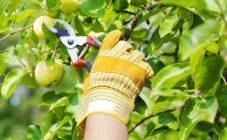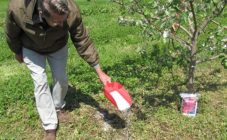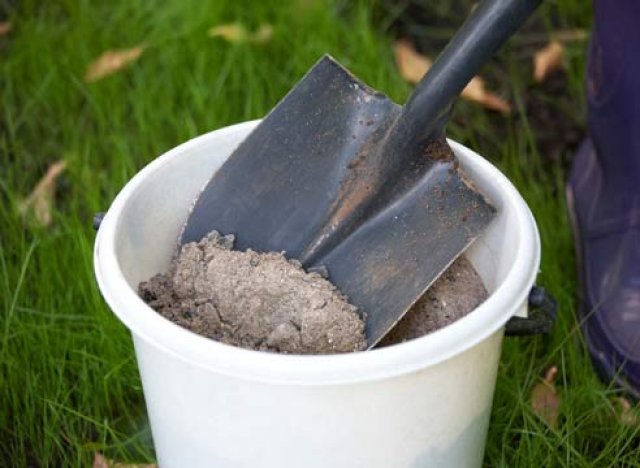Content:
The main ingredients for plant development are sun, water and good soil. Crops also need nutrients, which shrubs and trees do not always get from the ground. Fertilization is a mandatory stage of agricultural technology.
Spring as a time to feed
Plants have been developing in one place for decades, which is why the land is depleted, and trees and shrubs do not receive the nutrients they need. To ensure good yields, gardeners feed the crop with various fertilizers.
Each stage of the growing season requires its own nutrition, but the most important is the feeding of fruit trees and shrubs in the spring. Plants are moving away from hibernation, and they need strength for new growth and fruiting.
The sun is not yet so warm, there is a risk of recurrent frosts. Only increased sap flow will help to resist these factors. Provides such "blood flow" to fruit plants with good nutrition.
With the melting of the snow, a pest wakes up that hibernated under bushes and trees. For other insects, a favorite place to hide from frost is a sleeping bud. One of the elements of protection against parasites is the use of fertilizers that increase the immunity of plants.
Fertilizers
Depending on the condition of the soil and the type of culture, certain nutrients are required. According to these components, all fertilizers are divided into mono (i.e. simple) and complex, containing 2 or more substances. They may include mineral and organic fertilizers. In sold ready-made concentrated preparations, the composition is most often combined.
Bacterial fertilizers and organic green manure fertilizers are distinguished as a separate group. Each nutrient has its own characteristics of use, which the grower must consider.
Basic fertilizers for spring feeding
| Fertilizer | Description |
|---|---|
| Mineral | Concentrated salts with fast action are included in the composition. According to the active chemical element, they are divided into groups: phosphorus, potassium, nitrogen. As mentioned above, poly fertilizers contain more than one component, which is reflected in the name of the drug. The ratio of the elements of complex fertilizers is selected taking into account the season. All 3 components will be needed in spring, and each of them has its own function |
| Organic | This type of food is of natural origin - animal or vegetable (manure, dung, humus, compost, peat, etc.). When organic matter decomposes, minerals are formed that stimulate the development of microorganisms and beneficial bacteria that help plants to absorb nutrients. Fertilizers provide air-water balance in all parts of bushes and trees. Carbon dioxide released into the soil triggers photosynthesis |
Types of dressing Maximum efficiency can be achieved by combining organic matter with mineral water. Concentrated salts not only nourish plants, but also have a negative effect if the proportion is incorrectly selected. Organic fertilizers will smooth out this negative effect, providing food for the berry area for the entire growing season.
Top dressing is carried out in two ways: by applying to the ground and by spraying plants.This allows you to optimize the nutritional regimen for a specific phase of development, taking into account the needs of each crop.
Spring feeding of berry bushes and trees is carried out based on the following conditions. During the period of vegetative mass gain (March), nitrogen fertilizers should prevail. Potassium-phosphorus is necessary for budding and flowering (April-May).
Complex fertilizers are used throughout the spring season. The concentration is selected based on the composition of the soil:
- on soddy podzolic, use the maximum recommended dose;
- on the forest - medium;
- in the black earth strip - a minimum.
The first time fertilizer is applied to the soil before planting the seedlings, and during the year, additional fertilizing is no longer used. The plant will have enough of those that are laid in the pit. In the next season, nutrients are applied either in the near-trunk circle, or special furrows are made along the row.
In subsequent years, take into account that the root area of the bush increases. Therefore, it will be necessary to differentiate the fertilizer rates every time.
Root feeding is carried out in 2 ways: scattered dry in the aisles and combined with watering plants. The second option is more popular with summer residents, since nutrients reach the roots faster.
Dry dressing
After the fertilizers are scattered between the rows, they need to be embedded in the soil by digging up the earth with a shovel. In this case, the seam is turned to a depth of 12 cm. After digging, the soil is carefully loosened with a rake.
Once in the ground, microelements are moistened with soil moisture and evenly distributed. The moving process will be more active if the soil between the rows has a loose structure. To optimize exposure, it is recommended to water the fertilizer spots immediately.
Liquid food
Feeding with solutions is carried out more often, while using mineral fertilizers, one should not strictly follow the instructions on the package - it is more designed for industrial farmers who have the opportunity to carry out soil analysis. For small gardening, it is better to reduce the concentration by 3-4 times and inject the solution into the ground not every 2 weeks, but after 4 days.
It is important to consider the rules for applying organic fertilizers. For example, some crops do not tolerate fresh manure, while others respond favorably to it. Without knowing such nuances, it is better to use fermented mullein.
Commonly Used Nutrient Organics
| Name | Recommendations |
|---|---|
| Mullein | · Fresh manure is poured with water in a ratio of 1: 2 and covered with a lid. The mixture is stirred every 3 days. Fermentation continues until bubbles appear on the surface. Signs of the final readiness of the solution - sedimentation of solid particles to the bottom and clarification of the composition; |
| Before use, the fermented solution must be diluted with water: for trees in a ratio of 1:10, for berries - 1:15 | |
| Bird droppings | · The composition of this organic matter is highly effective, therefore it is used only in small concentrations - 200 ml of water is needed for 1 g of dry raw materials. The fermentation vessel should be chosen with a margin - the solution significantly increases in volume during the process; |
| When the solution is ready, dilute it again at a ratio of 1:20 or 25, depending on the culture | |
| Blood flour | Here, the ratio of raw materials and water should be 1:50. The solution is fermented for 4-5 days with daily stirring. The finished composition does not need additional dilution, but it is recommended due to the high nitrogen content when distilling plants |
| Bone meal | · In this organic matter, there is a predominance of phosphorus. It is often used in dry form, as an additive in earthen mixtures (1: 100), but flour is also good in solutions. 1 part of the fertilizer is poured with 20 parts of hot water and insisted for a week, stirring twice a day; |
| Before use, it should be filtered and diluted in a ratio of 1: 400 |
Food waste and feces can be used as additional elements in the compost. It is also good to fertilize fruit plantings with compost, which must stand at least 4 months. Laying manure, peat, hay into the pit in layers, they form a pile, which is periodically shoveled and watered in dry weather.
Foliar top dressing
The processing of branches allows you to solve 2 problems in one step: fertilize plants, and also protect against pests and scab infestation. In the spring, spraying with urea of trees and shrubs is carried out as soon as bud opening begins. Often this action is combined with the treatment with Bordeaux liquid or copper sulfate.
Diluting funds, strictly adhere to the instructions. Before processing the orchard, it is necessary to take safety measures: wear protective clothing, gloves, glasses, a respirator (the formulations used for spraying are toxic).
Possible errors, recommendations
Newly made gardeners sometimes make mistakes in caring for summer cottages. To avoid them when carrying out dressings, you need to take into account some points:
- choose the right time for such work: early in the morning or before sunset, and only in dry, calm weather;
- you need to feed after a certain period after ordinary watering;
- it is necessary to apply fertilizer not under the bush or tree itself, as some do; nutrients should flow to young roots located slightly away from the trunk; it is on them that the hairs are located, through which the roots absorb moisture and fertilizers from the ground;
- unbalanced nutrition harms plants; if, for example, you overfeed with nitrogen, then flowering and fruiting will be threatened, and the leaves and stems will become brittle; such plants are more often visited by a pest, and they lose their immunity to diseases;
- some summer residents believe that the more food the better; too abundant feeding or a high concentration of fertilizers will provoke burns (this is especially dangerous when spraying);
- by introducing a large nutritional dose into depleted soil, it is possible to actually cause an osmotic shock in the plant, leading to death.
Early spring feeding, carried out in compliance with all the rules and regulations, will guarantee that the summer resident will receive a large tasty harvest as a result. In addition, root growth can be directed with fertilizers. Then the plants will not interfere with each other's development.

